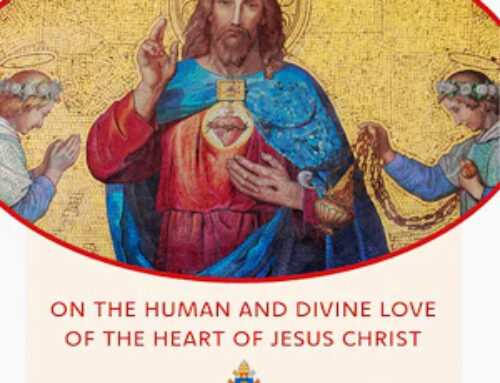(This article originally appeared in the TAU-USA Spring 2024 Digital Issue #111)
by Bret Thoman, OFS

The Original San Damiano Crucifix
On Friday, January 5, 2024, at the Sanctuary of La Verna, the Franciscan Family officially opened the VIII Centenary of the Stigmata of St. Francis, with an event entitled “From the wounds to new life.” Eight centuries ago this year, up on the same mountain, on September 17, 1224, he received the stigmata; that is, the wounds of Christ were revealed on his hands, feet, and side. However, St. Francis’ interiorization of the cross took place much earlier. It happened around 1205-06, at the beginning of his conversion.
After Francis’ dream of becoming a knight ended in failure, he was praying in solitary places around Assisi in order to discern what God wanted for him. The Legend of the Three Companions describes one pivotal moment.
While he was walking by the church of San Damiano, he was told in the Spirit to go inside for a prayer. Once he entered, he began to pray intensely before an image of the Crucified, which spoke to him in a tender and kind voice: “Francis, don’t you see that my house is being destroyed? Go, then, and rebuild it for me.”
Thomas of Celano, Francis’ first biographer, recorded something that perhaps not everyone understood: “From that time on, compassion for the Crucified was impressed into his holy soul. And we honestly believe the wounds of the sacred Passion were impressed deep in his heart, though not yet on his flesh” (Second Life 10: Book II: 249). That would take place in 1224, in Laverna.
From that moment, Francis looked at the cross as the highest expression of the “minority” of Christ. St. Francis’ understanding of the cross was not mere abstract theological assent.
Instead, the cross was something concrete that lived within him.
The cross is the lowest place Christ assumed when he came down from the heavens to assume human flesh: “though he was in the form of God, Jesus did not regard equality with God something to be grasped. Rather, he emptied himself, taking the form of a slave, coming in human likeness; and found human in appearance, he humbled himself, becoming obedient to death, even death on a cross!” (Philippians 2: 5-8).
With Christ as his example, in his footsteps, Francis began to appropriate to himself the cross. He so identified with the cross that he used it as a type of signature. He would leave the marking of the Tau etched into walls and ceilings wherever he went. He signed his name with the Tau in the few manuscripts we have written by him.
Francis embodied the cross of Christ so fully that it informed him in every circumstance of life— especially the difficult ones. The way he did so is perhaps best revealed in one of Francis’ dictated writings known as “True and Perfect Joy,” recounted in Little Flowers of St. Francis (Chapter 8).
In the popular narrative, Francis and Brother Leo were returning to the Portiuncula from Perugia during the cold winter months. As they walked, Francis said to Brother Leo that true joy would not exist in great circumstances, such as if all the theologians of Paris, prelates, and royalty were to enter the Order. He continues, saying that true joy would not be present even if his brothers were to convert all non-believers to the faith, or if he had so much grace from God that he healed the sick and performed miracles.
Then Francis reveals what true joy is. He tells Brother Leo that if the two were to arrive at the Portiuncula in Assisi in the dead of night, during the winter, freezing, covered with mud and ice, and the porter would not recognize them, but order them to go away, telling them that they were “simple and stupid!”, then Francis says, “I tell you this: If I had patience and did not become upset, true joy, as well as true virtue and the salvation of my soul, would consist in this.”
St. Francis was teaching Brother Leo that nothing good is ours; rather, all good comes from God. He said that the greatest graces and gifts of the Holy Spirit are those of conquering oneself and willingly enduring “sufferings, insults, humiliations, and hardships for the love of Christ”; for Scripture says, “Who confers distinction upon you? What do you possess that you have not received? But if you have received it, why are you boasting as if you did not receive it?” (1 Corinthians 4:7);
Francis concludes with one final verse: “May I never boast except in the cross of our Lord Jesus Christ, through which the world has been crucified to me, and I to the world” (Galatians 6:14). And this same cross would reveal itself soon on his body.




Leave A Comment